What are the health benefits of pottery making?
Pottery making is not just an art form; it's a holistic experience that offers a wealth of health benefits that touch on various aspects of our well-being. Imagine shaping a lump of clay into something beautiful, all while feeling your worries melt away. This age-old craft combines creativity with therapeutic practices, making it a unique avenue for enhancing both mental and physical health. Whether you're molding a simple bowl or crafting a complex sculpture, the act of creating can lead to a profound sense of satisfaction and joy. But what exactly makes pottery so beneficial? Let’s dive into the many advantages that come with this engaging hobby.
When it comes to mental health, pottery making shines as a therapeutic activity. The process of shaping and molding clay can significantly reduce stress, anxiety, and even depression. As you immerse yourself in the creative process, your mind shifts focus, allowing for a calming effect that promotes mindfulness. Just think about it: when your hands are busy, your mind can take a break from the chaos of everyday life. This meditative aspect of pottery can lead to increased feelings of happiness and fulfillment. Plus, there’s something incredibly rewarding about creating something with your own hands, which can boost your self-esteem and overall mood.
Engaging in pottery is not just about mental well-being; it also involves various physical activities that can enhance your health. As you knead, mold, and shape the clay, you're actually working on your hand-eye coordination and fine motor skills. These skills are essential not just for artistic expression but also for many daily tasks that require precision. Picture yourself effortlessly typing on a keyboard or performing intricate tasks like sewing—these abilities are honed through the practice of pottery. Furthermore, the repetitive motions of kneading and shaping clay strengthen your hand muscles, promoting better grip and dexterity over time.
The intricate motions involved in pottery making enhance hand-eye coordination, which is beneficial for both artistic expression and daily tasks requiring precision. Think of it as a dance between your hands and your eyes; as you focus on shaping the clay, your brain learns to synchronize these movements, leading to improved overall coordination.
Pottery making requires delicate movements that refine fine motor skills, crucial for tasks such as writing, typing, and other manual activities. The act of pinching, rolling, and smoothing clay helps develop the small muscles in your hands and fingers, making everyday tasks easier and more efficient.
The repetitive motions of kneading and shaping clay strengthen hand muscles, promoting better grip and dexterity over time. Just like lifting weights at the gym, working with clay can lead to tangible improvements in strength and endurance in your hands and fingers.
Believe it or not, pottery making can also be a form of physical activity. As you stand, bend, and manipulate materials, you’re engaging in movements that help burn calories and improve overall fitness. It’s like sneaking in a workout while having fun! So, if you’re looking for a creative outlet that also keeps you active, pottery might just be the perfect match.
One of the most delightful aspects of pottery making is its ability to foster social interaction. Participating in pottery classes or workshops opens up opportunities for community building, friendships, and shared experiences that enhance social well-being. Imagine being surrounded by like-minded individuals, all eager to express themselves through clay. This environment not only nurtures creativity but also creates lasting connections.
Pottery making often involves group activities that help individuals connect with others, fostering a sense of belonging and community support. Whether you’re working on a group project or simply sharing tips and techniques with fellow potters, the camaraderie built through this shared experience is invaluable.
Engaging in collaborative pottery projects encourages teamwork and communication skills, enriching social interactions and relationships among participants. The joy of creating something together can lead to deeper bonds and a sense of accomplishment that extends beyond the studio.
- What materials do I need to start pottery making? Basic materials include clay, a pottery wheel, tools for shaping, and a kiln for firing your creations.
- Is pottery making suitable for beginners? Absolutely! Many classes cater to beginners, providing step-by-step guidance to help you get started.
- How often should I practice pottery to see improvements? Regular practice is key; even a few hours a week can lead to noticeable progress over time.
- Can pottery making be done at home? Yes! With the right materials and equipment, you can easily set up a pottery space in your home.

Mental Health Benefits
Pottery making is not just about crafting beautiful pieces of art; it’s a therapeutic journey that offers profound mental health benefits. Imagine sitting at a potter's wheel, your hands immersed in soft clay, the world around you fading away. This creative process acts as a natural stress reliever, allowing you to escape the hustle and bustle of everyday life. The act of molding and shaping clay can help reduce stress, anxiety, and even symptoms of depression. It’s like meditation, but with a tangible outcome!
When you focus on the tactile experience of working with clay, you engage in a form of mindfulness. This heightened state of awareness allows you to live in the moment, alleviating worries about the past or future. As you concentrate on your creation, you might find that your mind quiets down, akin to the calm you feel after a long walk in nature. This meditative aspect of pottery can lead to a significant enhancement of mood and overall emotional well-being.
Moreover, pottery making can also serve as a form of self-expression. Each piece you create is a reflection of your thoughts, feelings, and experiences. This act of expressing yourself through art can be incredibly liberating, allowing you to process emotions that might be difficult to articulate verbally. Whether it’s a beautifully glazed bowl or a quirky sculpture, every creation tells a story, and that story can aid in your healing journey.
Additionally, the repetitive motions involved in pottery—such as kneading, rolling, and shaping—can have a calming effect on the mind. This physical engagement helps to release built-up tension, similar to how some people find relief in activities like knitting or gardening. The rhythmic nature of these actions can create a sense of stability and routine, which is particularly beneficial for those struggling with mental health issues.
In summary, the mental health benefits of pottery making are vast and varied. From reducing stress and anxiety to enhancing mindfulness and providing a creative outlet, engaging with clay can be a powerful tool for improving your mental well-being. So, why not give it a try? You might just find that your next favorite hobby also becomes a vital part of your self-care routine!
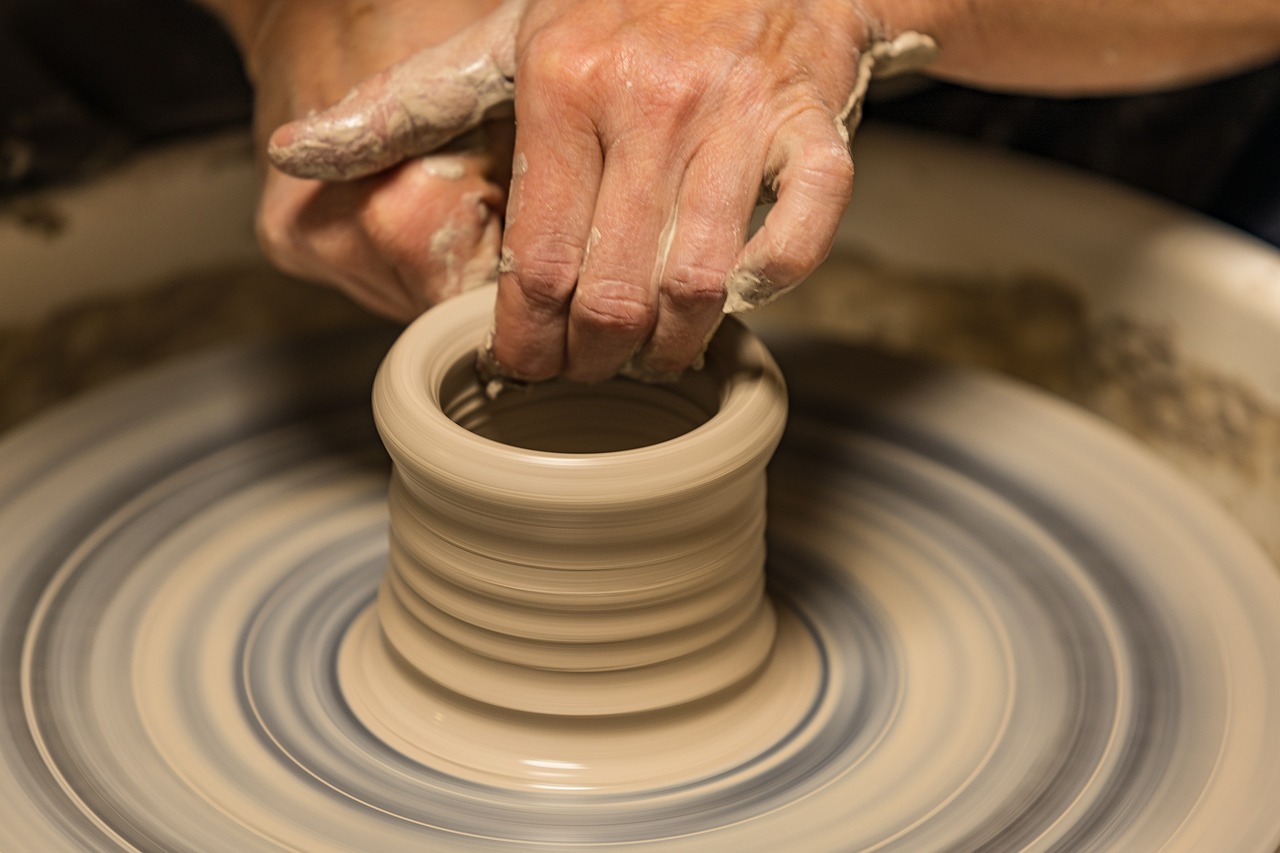
Physical Health Benefits
This article explores the various health benefits associated with pottery making, including mental, physical, and social advantages that enhance overall well-being and promote creativity.
Pottery making serves as a therapeutic activity that can reduce stress, anxiety, and depression, providing a calming effect and enhancing mindfulness through the creative process.
Engaging in pottery is not just about creating beautiful pieces of art; it also involves a variety of physical activities that can significantly improve your overall health. From enhancing fine motor skills to providing a form of exercise, pottery making is a multifaceted activity that benefits the body in numerous ways. It’s like a workout for your hands and mind, combining creativity with physical movement.
The intricate motions involved in shaping clay enhance hand-eye coordination, which is beneficial for both artistic expression and daily tasks requiring precision. When you mold and sculpt, your brain is actively engaged in coordinating your hand movements with what you see, improving this vital skill over time. Imagine trying to catch a ball; the better your hand-eye coordination, the easier it is to make that catch. Pottery works similarly, making your hands and eyes work in harmony.
Pottery making requires delicate movements that refine fine motor skills, crucial for tasks such as writing, typing, and other manual activities. As you pinch, roll, and shape the clay, you’re not just creating art; you’re also honing the small muscle movements in your fingers and hands. This can be especially beneficial for children and older adults, as these skills are essential for daily living. Think of it as a fun way to keep your hands nimble and your mind sharp!
The repetitive motions of kneading and shaping clay strengthen hand muscles, promoting better grip and dexterity over time. Just like lifting weights builds muscle in your arms, working with clay can enhance the strength in your hands. This is particularly important for those who may experience weakness in their grip as they age or those who use their hands extensively in their professions. Pottery can be a hands-on solution to maintaining and improving hand strength.
Pottery making can also be a form of physical activity, helping to burn calories and improve overall fitness through standing, bending, and manipulating materials. While you may not think of pottery as a workout, consider this: every time you stand up to get more clay or bend down to pick up tools, you’re engaging in movement that can contribute to your daily exercise. It’s a creative way to stay active without the monotony of traditional workouts. Plus, it’s far more enjoyable!
Participating in pottery classes or workshops fosters social interaction, creating opportunities for community building, friendships, and shared experiences that enhance social well-being.
Pottery making often involves group activities that help individuals connect with others, fostering a sense of belonging and community support.
Engaging in collaborative pottery projects encourages teamwork and communication skills, enriching social interactions and relationships among participants.
- What materials do I need to start pottery making? You will need clay, tools for shaping, a pottery wheel (if you want to throw), and a kiln for firing your pieces.
- Is pottery making suitable for all ages? Absolutely! Pottery can be enjoyed by individuals of all ages, from children to seniors.
- How long does it take to learn pottery? The learning curve varies, but with regular practice, you can start creating basic pieces within a few weeks to months.
- Can pottery making be a full-time career? Yes, many people turn their passion for pottery into a successful career, whether as artists, teachers, or studio owners.

Improved Hand-Eye Coordination
When you dive into the world of pottery making, one of the most fascinating benefits you’ll experience is the remarkable improvement in hand-eye coordination. Imagine molding a lump of clay into a beautiful vase or a delicate bowl; every twist and turn requires a dance between your hands and your eyes. This intricate process is not just about creating art; it's a workout for your brain and body. The brain sends messages to your hands, guiding them to perform precise movements while your eyes track the progress. This synergy enhances your ability to perform daily tasks with greater ease and accuracy.
Think about it: every time you pinch, roll, or shape the clay, you are engaging in a form of exercise that sharpens your reflexes. It’s like playing a musical instrument, where each note must be hit at the right moment. As you practice pottery, you’ll notice that your ability to coordinate your movements improves significantly. This is especially beneficial for activities that require fine motor skills, like typing or playing sports. It’s a subtle yet powerful transformation that occurs over time, often without you even realizing it.
Moreover, the benefits of improved hand-eye coordination extend beyond the pottery studio. You might find yourself becoming more adept at everyday activities such as cooking, driving, or even playing video games. The skills you develop while working with clay can translate into enhanced performance in various aspects of life. It’s like building a bridge between creativity and practicality, where every pot you create not only serves as a piece of art but also as a stepping stone to greater physical dexterity.
To truly appreciate the impact of pottery on hand-eye coordination, consider the following:
- Increased Precision: The more you practice, the more precise your movements become, allowing for intricate designs and details.
- Enhanced Focus: Pottery demands concentration, which translates into better focus in other areas of your life.
- Boosted Confidence: As you see your skills improve, you’ll gain confidence not just in pottery but in other activities as well.
In summary, pottery making is not only a creative outlet but also a fantastic way to enhance your hand-eye coordination. So, whether you’re a beginner or a seasoned potter, remember that each piece you create is a step towards better coordination and a more fulfilling life!
Q: Can pottery help with my overall coordination skills?
A: Absolutely! Pottery involves intricate hand movements that enhance your hand-eye coordination, which can benefit various daily activities.
Q: Do I need any prior experience to benefit from pottery?
A: Not at all! Pottery is accessible to everyone, and beginners can enjoy the process while improving their skills over time.
Q: How often should I practice pottery to see improvements?
A: Regular practice is key. Even a few hours a week can lead to noticeable improvements in your coordination and skills.
Q: Are there any age restrictions for pottery making?
A: Pottery can be enjoyed by people of all ages, making it a fantastic activity for families and individuals alike!
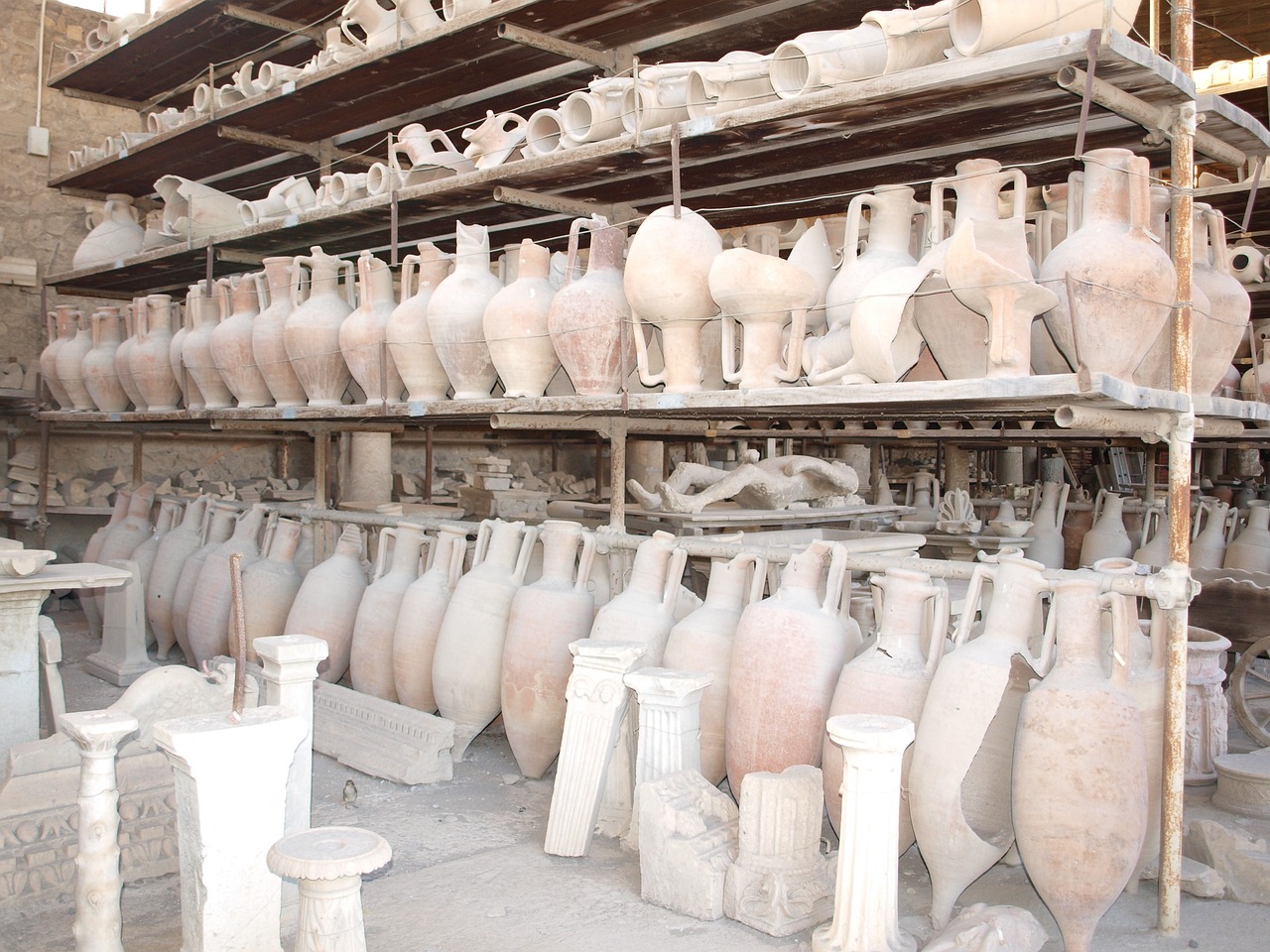
Fine Motor Skills Development
When you think about pottery making, you might picture someone spinning a wheel and crafting beautiful pots. But did you know that this artistic endeavor does wonders for your fine motor skills? That's right! The delicate movements required to shape and mold clay are not just about creating art; they play a crucial role in developing the tiny muscles in your hands and fingers. Think of it as a workout for your hands—just as lifting weights builds your biceps, working with clay strengthens your dexterity.
Engaging in pottery involves a variety of precise actions such as pinching, rolling, and smoothing the clay. Each of these actions requires a level of control that can significantly enhance your hand-eye coordination. For instance, when you’re centering the clay on the wheel, you need to apply just the right amount of pressure while keeping your eyes focused on the spinning mass. This combination of sight and touch is what sharpens your motor skills.
Moreover, the benefits extend beyond the pottery studio. Improved fine motor skills can enhance your performance in everyday tasks. Whether it’s writing, typing, or even buttoning a shirt, the skills you develop while working with clay translate into greater ease and efficiency in daily life. Imagine the confidence boost you get when you realize that tasks you once found challenging are now a breeze!
Additionally, pottery making can be particularly beneficial for children. As they learn to manipulate clay, they're not just having fun; they're also developing crucial skills that will aid them in their academic and personal lives. It's like giving them a head start in mastering the art of coordination. To illustrate, here’s a quick comparison of how pottery enhances fine motor skills:
| Activity | Fine Motor Skill Developed |
|---|---|
| Pinching Clay | Grip Strength |
| Rolling Clay | Hand Coordination |
| Detailing with Tools | Precision and Control |
In summary, pottery making is not just a creative outlet; it’s a powerful tool for enhancing fine motor skills. Whether you’re a beginner or a seasoned potter, the act of shaping clay can lead to remarkable improvements in your dexterity and coordination. So, why not give it a try? You might just find that you’re not only creating beautiful pieces of art but also developing skills that will serve you well in all aspects of life!
- What age is suitable for starting pottery? Pottery can be enjoyed by individuals of all ages, but children typically start around age 6 or 7.
- Do I need any prior experience to start pottery? Not at all! Pottery classes are available for beginners, and instructors will guide you through the basics.
- How long does it take to see improvements in fine motor skills? Improvement can vary from person to person, but many notice changes within a few weeks of regular practice.
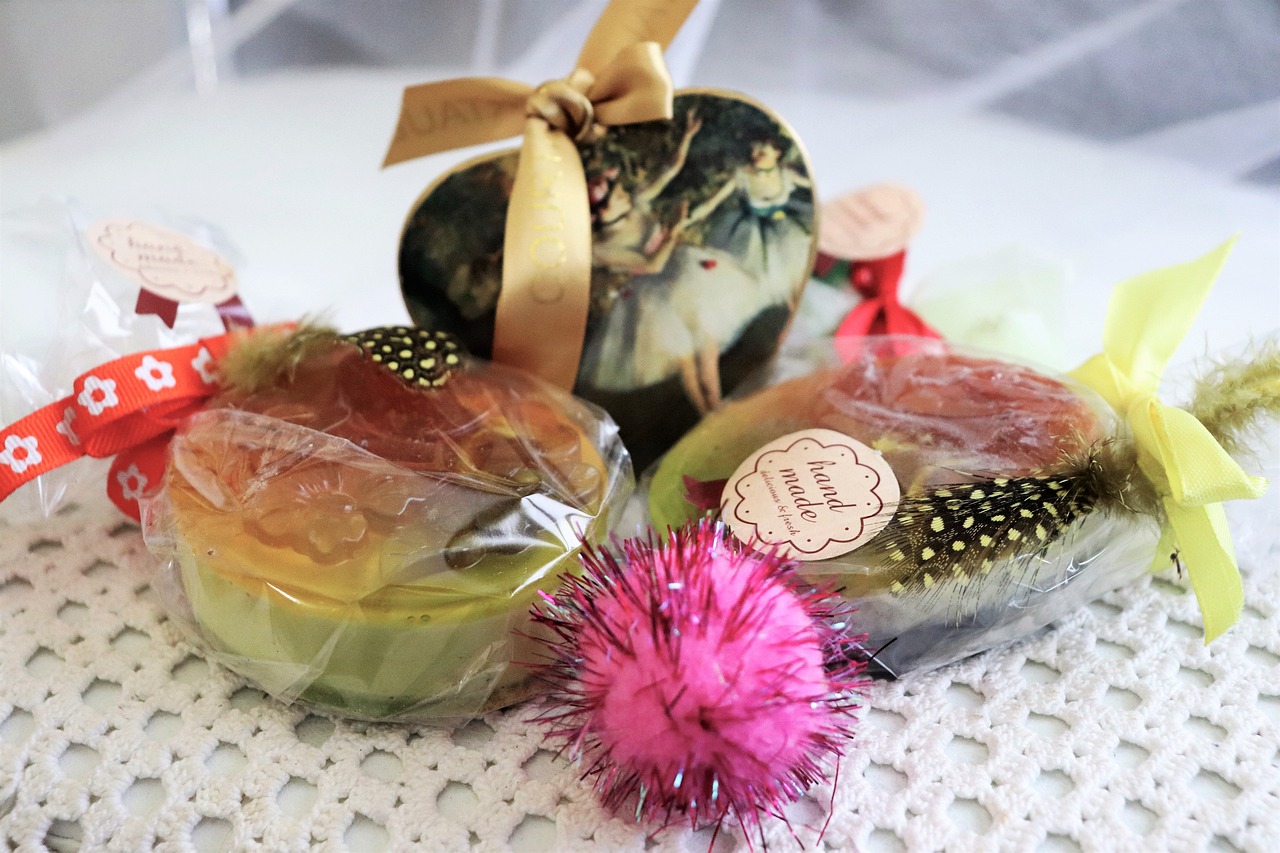
Strengthening of Hand Muscles
When you dive into the world of pottery making, you're not just engaging in a creative outlet; you're also embarking on a journey that significantly strengthens your hand muscles. Think about it: every time you knead, shape, or mold that soft, pliable clay, you are performing a mini workout for your hands! The repetitive motions involved in pottery are akin to a gym session for your fingers and hands, providing them with the resistance they need to grow stronger.
As you push and pull the clay, your muscles are working hard, adapting to the demands of the task at hand. This process not only builds strength but also enhances your grip. A stronger grip can be beneficial in everyday activities, from opening jars to typing on a keyboard. You might not notice it immediately, but over time, your hands will become more capable and dexterous, allowing you to perform tasks with greater ease and precision.
Moreover, pottery making is a fantastic way to improve your hand endurance. Just like athletes train their muscles to go the distance, your hands become conditioned to handle longer sessions of intricate work. This endurance translates into better performance in other hobbies or jobs that require fine motor skills. So, whether you're a budding artist or someone who simply enjoys crafting, pottery can be your secret weapon for building stronger hands.
To give you a clearer picture, here’s a simple overview of how pottery strengthens your hand muscles:
| Activity | Muscle Group Targeted | Benefit |
|---|---|---|
| Kneading Clay | Forearm and Hand Muscles | Increases strength and endurance |
| Shaping and Molding | Fingers and Palm Muscles | Improves dexterity and control |
| Trimming and Finishing | Wrist and Hand Muscles | Enhances grip strength and precision |
In summary, pottery making is not just about creating beautiful pieces of art; it's also an engaging way to develop and strengthen your hand muscles. So, next time you sit down at the pottery wheel or start molding that clay, remember that you're doing wonders for your physical health, one pot at a time!
- What are the best types of clay for beginners? Beginners often start with earthenware clay, which is easy to work with and forgiving for new potters.
- How often should I practice pottery to see improvements? Regular practice, ideally a few times a week, can lead to noticeable improvements in your skills and muscle strength.
- Can pottery making help with arthritis? Yes, the gentle movement and strengthening of hand muscles can be beneficial for those with arthritis, but it’s always best to consult with a healthcare provider first.
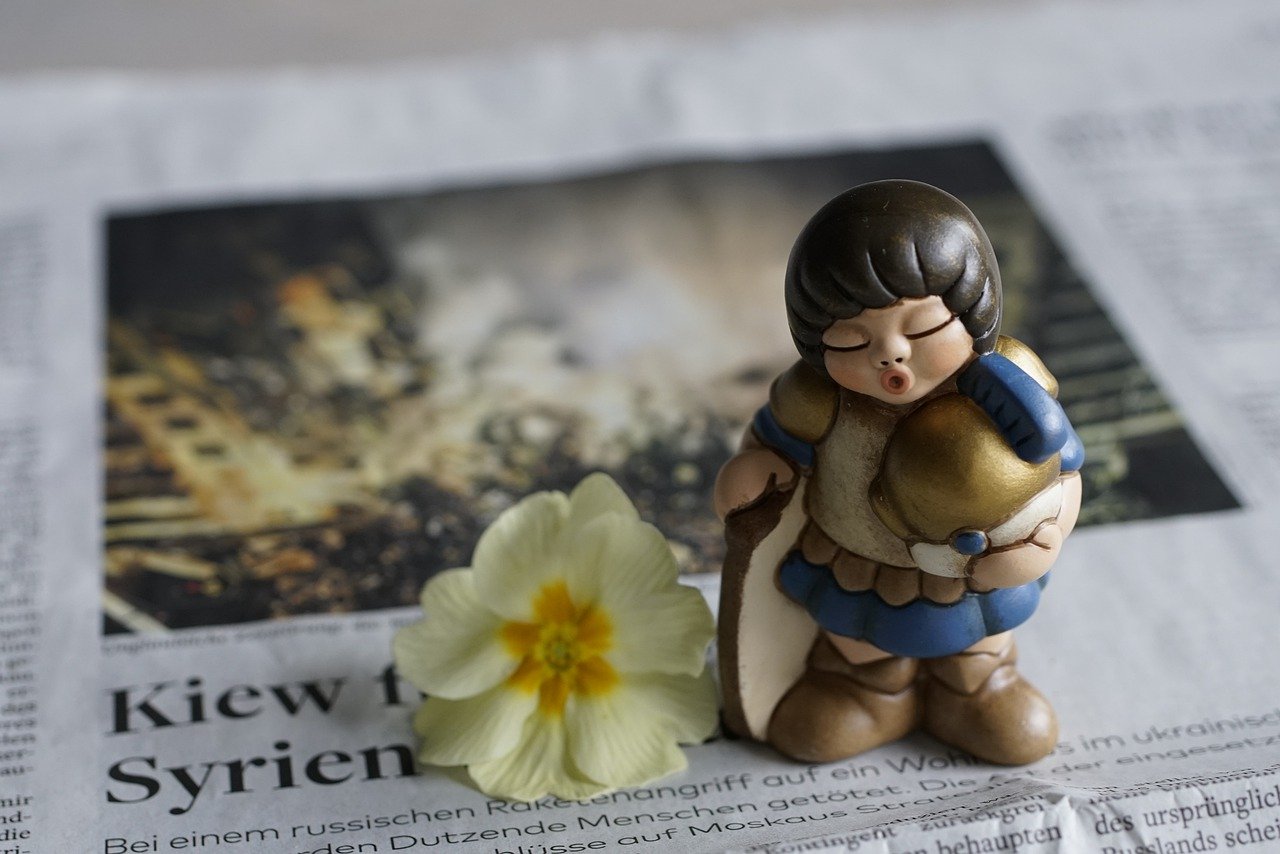
Physical Activity and Exercise
Engaging in pottery making is not just about artistic expression; it also serves as a fantastic form of physical activity. When you think about it, pottery involves a range of movements that can keep you active and fit. From standing at the pottery wheel to bending down to pick up clay, the process is dynamic and engaging. You might be surprised to learn that these activities can actually help you burn calories, similar to a light workout!
Consider the various movements involved in pottery making. You’re constantly stretching, bending, and manipulating materials. This not only helps in improving your flexibility but also enhances your overall physical fitness. Just think of it as a fun way to sneak in some exercise while you create something beautiful. The repetitive motions of kneading clay, for instance, can be likened to a form of strength training for your arms and hands. Who would have thought that crafting art could also lead to a toned physique?
Moreover, pottery making encourages you to be on your feet, which is a great alternative to sitting for long hours. In our increasingly sedentary lifestyles, finding ways to incorporate movement is essential. Pottery classes or workshops often involve standing for extended periods, which can help counteract the negative effects of prolonged sitting. Think of it as a delightful escape from the office chair, allowing you to engage your body while your mind is creatively stimulated.
The social aspect of pottery also plays a role in keeping you active. When you join a pottery class, you’re likely to be surrounded by others who share your passion. This creates a motivating environment that encourages you to participate actively. You might find yourself moving around, helping others, or even participating in group projects that require physical involvement. The camaraderie and shared enthusiasm can make the experience feel less like a chore and more like an enjoyable workout!
In summary, pottery making is an excellent way to integrate physical activity into your routine without it feeling like a traditional workout. It combines creativity with movement, making it a unique and fulfilling experience. So, the next time you sit down to shape clay, remember that you’re not just creating art; you’re also engaging in a healthy activity that benefits your body and mind.
- How does pottery help with mental health?
Pottery making can reduce stress and anxiety by providing a calming effect through creative expression. - Can pottery making improve physical health?
Yes, it enhances hand-eye coordination, fine motor skills, and overall physical dexterity. - Is pottery a social activity?
Absolutely! Participating in pottery classes fosters social interaction and community building. - What are some physical benefits of pottery?
Pottery involves physical activity that can help burn calories and improve overall fitness.
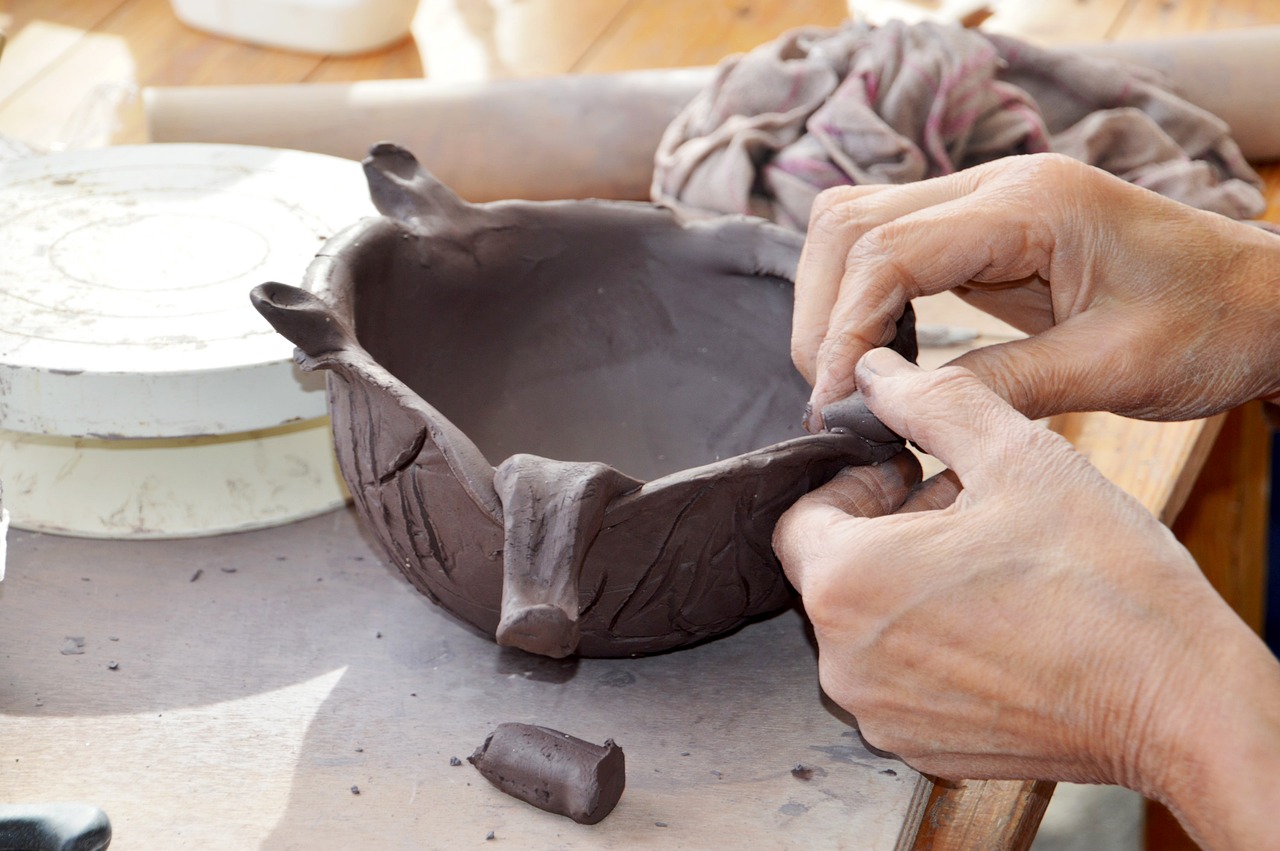
Social Benefits
Engaging in pottery making goes beyond just creating beautiful pieces of art; it opens the door to a vibrant social life. When you join pottery classes or workshops, you step into a world where creativity meets community. This shared experience fosters social interaction and creates opportunities for building lasting friendships. Imagine sitting at a pottery wheel, surrounded by fellow enthusiasts, each of you immersed in your own artistic journey yet connected by a common passion. Doesn’t that sound uplifting?
Moreover, pottery making often involves group activities that help individuals connect with others, fostering a sense of belonging and community support. Think of it as a potluck dinner, but instead of food, you’re sharing ideas, techniques, and laughter as you mold clay into unique forms. The camaraderie that develops in these settings can be incredibly rewarding, making you feel like you’re part of something bigger than yourself.
One of the most enriching aspects of pottery is the opportunity for collaborative projects. When you work together with others to create a single piece or a series of items, it encourages teamwork and enhances communication skills. You learn to listen and share ideas, which not only enriches your pottery skills but also deepens your relationships with others. The process of creating something as a team can lead to a sense of accomplishment that is hard to replicate in solitary activities.
In addition to fostering connections, pottery making can also be a fantastic way to meet people from diverse backgrounds. The pottery community is often inclusive and welcoming, providing a safe space for individuals to express themselves. This melting pot of ideas and cultures can lead to new friendships and collaborations that extend beyond the studio.
So, whether you’re looking to expand your social circle, engage in meaningful conversations, or simply enjoy the company of like-minded individuals, pottery making provides a perfect avenue for social enrichment. It’s not just about the clay; it’s about the connections you forge along the way.
- What materials do I need to start pottery making? You will need clay, a pottery wheel (optional), tools for shaping and trimming, and a kiln for firing your pieces.
- Can pottery making be done at home? Yes, many people create pottery at home, but you will need the right equipment and space for it.
- Is pottery making suitable for beginners? Absolutely! Many classes cater to all skill levels, making it easy for beginners to get started.
- How long does it take to learn pottery? The learning curve can vary, but with regular practice, you can start creating basic pieces within a few weeks.
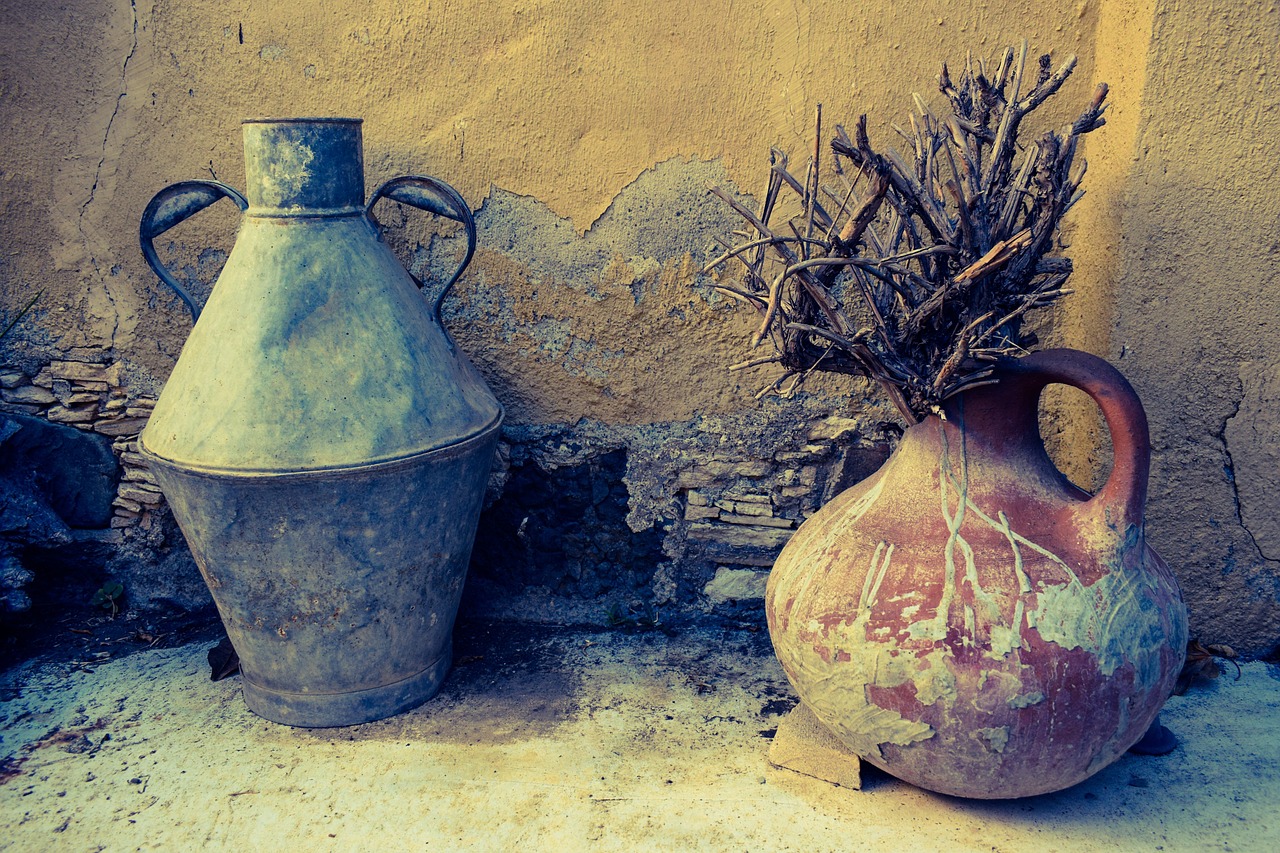
Building Community Connections
Pottery making is more than just molding clay; it’s a gateway to building meaningful community connections. When you step into a pottery class or workshop, you’re not just learning to create beautiful pieces; you’re entering a vibrant space filled with like-minded individuals who share a common passion. This shared interest can spark conversations and friendships that extend beyond the studio walls. Imagine walking into a room where the air is filled with laughter, the sound of clay being shaped, and the aroma of creativity—this is the magic of community pottery.
As you engage in pottery, you naturally find yourself collaborating with others. Whether it’s sharing tips on glazing techniques or working together on a group project, these interactions foster a sense of belonging. You might even find yourself exchanging stories about your lives, dreams, and challenges while your hands are busy crafting. It’s this blend of creativity and connection that makes pottery a unique experience.
Moreover, community pottery classes often host events, exhibitions, and showcases where participants can display their work. These events not only celebrate individual achievements but also highlight the collective talent of the group, reinforcing the bonds formed during the creative process. It’s inspiring to see your fellow potters shine, and it encourages you to push your own creative boundaries. In this way, pottery becomes a catalyst for community building.
In addition, many pottery studios offer workshops that invite the local community to join in, regardless of skill level. This inclusivity allows people from different backgrounds to come together, share their experiences, and learn from one another. It’s a beautiful reminder that art has the power to unite us, breaking down barriers and creating lasting connections.
So, whether you’re a seasoned potter or a complete beginner, the connections you build in a pottery class can enrich your life in ways you might not expect. The friendships formed, the lessons learned, and the memories created all contribute to a stronger sense of community. Pottery making is not just a solitary activity; it’s a shared journey that enhances our social well-being and fosters a supportive network.
- What materials do I need to start pottery making? You will need clay, tools for shaping, a pottery wheel (if you choose to throw), and access to a kiln for firing your pieces.
- Can pottery making help with stress relief? Absolutely! The process of shaping and molding clay can be incredibly therapeutic, providing a calming effect that helps reduce stress and anxiety.
- Do I need prior experience to join a pottery class? No, most classes welcome beginners and provide instruction tailored to your skill level.
- How can pottery making improve my social life? Joining pottery classes or workshops allows you to meet new people, engage in collaborative projects, and build lasting friendships.

Collaborative Projects
Engaging in collaborative pottery projects is not just about shaping clay; it's about shaping relationships. Imagine a group of individuals, each bringing their unique ideas and styles to the table, working together to create something beautiful. This shared experience fosters a sense of camaraderie and teamwork that can be deeply fulfilling. When you collaborate on a pottery project, you're not only learning from each other but also building bonds that can last a lifetime.
In a pottery class or workshop setting, participants often come together to tackle a common goal, whether it’s crafting a large mural, creating a series of matching bowls, or even sculpting a community piece that reflects local culture. These projects require effective communication and coordination, which can enhance social skills and promote a deeper understanding of teamwork. The joy of seeing a project come to life through the combined efforts of everyone involved is a rewarding experience that can boost morale and create lasting memories.
Moreover, collaborative pottery projects can also introduce individuals to diverse perspectives and techniques. Each participant may have different approaches to working with clay, and by sharing these methods, everyone can learn and grow. This exchange of ideas not only enriches the creative process but also encourages a culture of support and encouragement. When you see someone else’s unique style, it can inspire you to step out of your comfort zone and try new things. In this way, pottery becomes a medium not just for artistic expression but also for personal growth.
To illustrate the impact of collaborative projects, consider the following benefits:
- Enhanced Creativity: Working alongside others can spark new ideas and inspire innovative techniques.
- Improved Communication Skills: Discussing ideas and giving feedback helps develop effective communication.
- Sense of Accomplishment: Completing a project as a team fosters a sense of achievement that can boost self-esteem.
- Community Engagement: Collaborative projects often involve local themes, strengthening community ties.
In essence, collaborative pottery projects are a fantastic way to blend creativity with social interaction. They not only allow individuals to express themselves artistically but also create a supportive environment where friendships can blossom. So, whether you’re a seasoned potter or a complete novice, consider joining a group project. You might just discover that the real masterpiece is the connections you forge along the way!
- What types of collaborative pottery projects can I participate in? Collaborative projects can range from community art installations to group classes focused on creating specific items like bowls or vases.
- Do I need prior experience to join a collaborative pottery project? Not at all! Most collaborative projects welcome participants of all skill levels, and it's a great opportunity to learn from others.
- How can I find local pottery classes or workshops? You can search online for local art studios, community centers, or adult education programs that offer pottery classes.
- What are the benefits of working in a group? Working in a group enhances creativity, improves communication skills, and builds a sense of community and support.
Frequently Asked Questions
- What is pottery making?
Pottery making is the art of shaping clay into functional or decorative objects, which are then fired in a kiln to harden them. It's a creative process that combines artistry with craftsmanship.
- How does pottery making benefit mental health?
Engaging in pottery can significantly reduce stress and anxiety. The act of molding clay allows for mindfulness and focus, helping to clear the mind and promote relaxation.
- Can pottery making improve physical health?
Absolutely! Pottery involves various physical activities that enhance hand-eye coordination, fine motor skills, and overall dexterity. Plus, the repetitive motions can strengthen hand muscles over time.
- What social benefits come from pottery classes?
Pottery classes create a fantastic environment for social interaction. They foster community connections, allow for friendships to develop, and encourage collaboration through group projects.
- Is pottery making a good hobby for everyone?
Yes! Pottery is suitable for all ages and skill levels. Whether you are a beginner or have some experience, it offers a fulfilling way to express creativity and enjoy the therapeutic benefits.
- How can I get started with pottery?
You can start by joining a local pottery class or workshop. Many community centers and studios offer beginner courses that provide the necessary tools and guidance to kick off your pottery journey!
- What materials do I need for pottery making?
The basic materials include clay, a potter's wheel (if you're throwing), various tools for shaping and detailing, and a kiln for firing your pieces. Don’t worry; most classes provide these materials!
- Can pottery making be a form of exercise?
Yes! While it may not be a high-intensity workout, pottery can involve physical activity such as standing, bending, and manipulating materials, which can contribute to overall fitness.



















